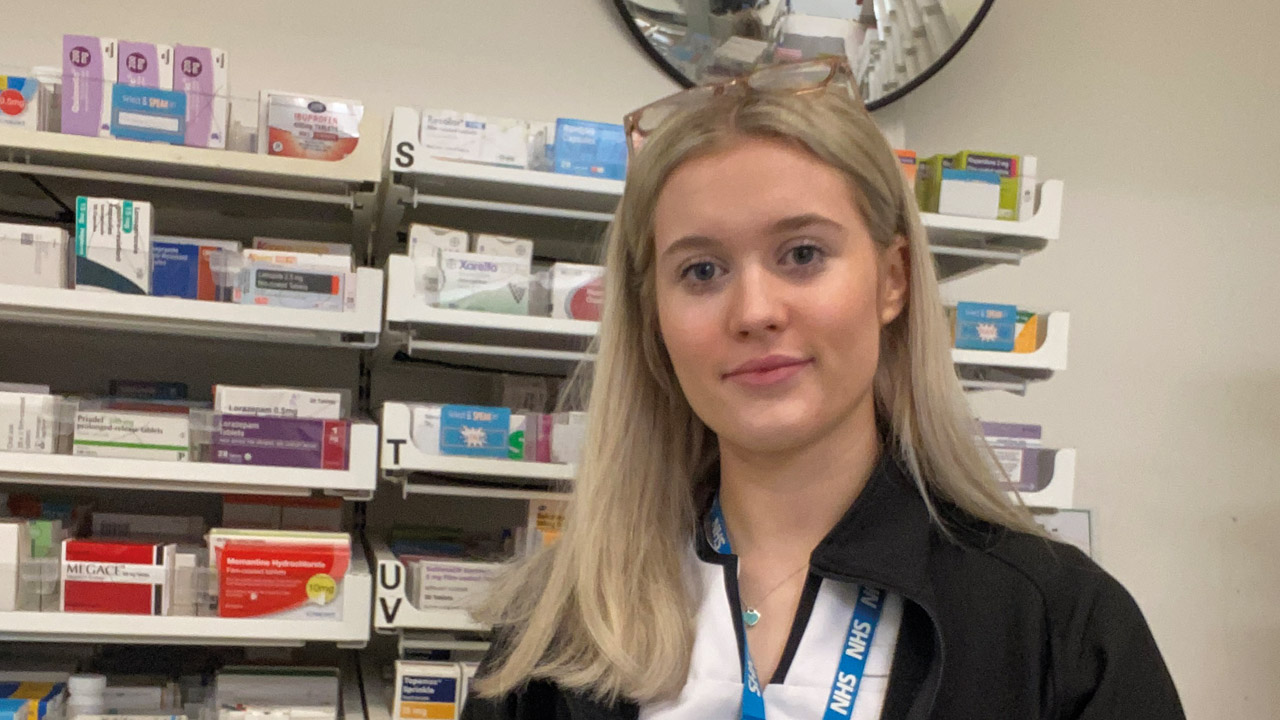In Practice
Follow this topic
Bookmark
Record learning outcomes
“At the start of the pandemic I was furloughed from my old job in Topshop,” explains Meg Bartholomew, pharmacy advisor at Boots, Stowmarket.
“I thought, I can’t just sit around and not do anything and I’d always said I wanted to go into pharmacy. I liked the idea of learning about medicines and people’s conditions and treatments, just helping people where I can. So, I applied for this job, and started in the summer of 2020!”
Since then, Meg has completed all her training to become a pharmacy advisor and looks forward to beginning a new course in the near future. “I’m starting my technician training at the end of this month,” she says. “Once I’ve done that, I’m going to hopefully do my flu jab training and start on the New Medicines Service consultations so that I can take some more pressure
off of the pharmacist.”
Safety first
Asides from training, Meg’s days in the pharmacy are jampacked with a little bit of everything. “At the moment I do over the counter sales, consultations and recommendations,” she says. “When I’m in the dispensary, I pick, scan and dispense the stock, walk-in and repeat prescriptions.
“I’m also the patient safety champion, so I do a review every month – I scan all the errors and see where we made the most – and then speak to the whole team about how to reduce this next month.”
Keeping the store organised is crucial to the smooth running of the pharmacy and something Meg takes very seriously. “We’re quite far ahead at the moment so I think we’re dispensing prescriptions that are due in 10 days,” she says.
“Seeing what we can do for patients, particularly our older customers, I think that makes it all worthwhile”
“I do like to just keep track of it all. I make sure we don’t have any owings on the screen and that we can source medications from a supplier. If we can’t, I’ll speak to the surgeries to see if we can get them an alternative.”
As the only full-time member of staff, Meg also tries to assist her manager who spends just three days a week in the pharmacy. “There’s not a lot of us,” she explains. “I’m the only full-time worker. There’s me, my manager who does three days in the pharmacy, the full-time pharmacist and three other girls who work part time.
“I just try and help my manager where I can. I can do paperwork and PQS. I try and help other colleagues with e-learning and making sure we’ve got a list of everyone who’s up to date.”
Meeting demands
Having started just as the pandemic was kicking off, it’s fair to say Meg has been witness to significant changes in pharmacy over the last three years, the most obvious of these being customer demand.
“The demand on the pharmacy is constantly increasing,” she explains. “Doctors are now saying go straight to your pharmacies and speak to the pharmacist. We’ve had an increase in over-the-counter recommendations as well, so it’s definitely been a learning curve.”
With this demand has come a change in people’s attitudes which aren’t always necessarily kind, according to Meg. “Since Covid, the way people talk to you has got a lot worse,” she says. “People are becoming increasingly impatient and don’t like waiting for things. I think it’s probably a knock-on effect from not being able to speak to the doctor.”
The team try to not let this get to them and instead focus on being the best source of help for their customers. On difficult days, Meg takes comfort in the fact that her team is around to support each other. “I’m so lucky, I work with a really nice team who get on very well,” she says. “We all take the patients and customers interests to heart. I think that really helps and seeing what we can do for patients, particularly our older customers, I think that makes it all worthwhile.”
Streamlining support
Equally, the team have adapted to make accessing medicines much smoother for their patients, especially those coming into the pharmacy with medicine recommendations from their doctor. The team provide the customer with as much information as possible about said medication when they dispense it. “Then instead of saying if it doesn’t work, go back to the doctors, we always just say come back in after a week and see if there’s something else you can try before we speak to the doctor,” explains Meg. “It’s so hard to get a doctor’s appointment so I do think that helps them and they like to know that they’ve been listened to as well.” Another example of the ways in which pharmacy teams continue to react to the needs of their communities in a changing and challenging environment.

